What Is The Best Beginner Guitar?
Mục Lục
4 Different Types of Guitar: What’s the Best for Beginners?
What’s the best beginner guitar? Every week we get about a dozen emails asking this question and it’s an important one because choosing the wrong guitar can ruin a beginner’s chances of learning the instrument.
We created this guide to help beginner guitarists find the perfect instrument to start their guitar journey.
In this guide you will learn:
- The 4 Different Types Of Guitar
- The Best Beginner Guitar For Electric Players
- The Best Beginner Guitar For Acoustic Players
- The 5 Different Guitar Body Shapes
- Our 3 Recommended Best Guitars For Beginners
- The 3 Criteria To Choose The Best Beginner Guitar For YOU
- Why Beginners Should Avoid Classical & Flamenco Guitars
- The Ideal Guitar Sizes For Children
- A Secret Tip That Makes You Sound 10% Better Immediately
There are big differences in guitar types and after reading this guide you’ll be able to pick the best beginner guitar for YOU; a guitar that’s perfect for your body size, shape and musical tastes.
You’ll find ‘Best Buy’ recommendations here, but the most useful pieces of this guide will help you understand what the different types of guitar are and how that impacts your chances of successfully learning the instrument.
Over 250,000 guitar-learners get our world-class guitar tips & tutorials sent straight to their inbox: Click here to join them
If you want to be a better guitarist click here for our guitar courses
‘What’s the best guitar for beginners?’
Wow, this is a question I’ve been asked hundreds of times. The short answer is that the best beginner guitar is the guitar that you find fun and easy to play.
What’s the best beginner guitar for YOU? Well that varies from person to person due to body shape & size, height, finger thickness, hand size, posture, musical tastes and your physical environment and home/practice space.
One person’s “perfect guitar” is another person’s nightmare.
If there’s one point I want you to take from this guide it is this: One size does NOT fit all.
Don’t worry, I’m going to make it really easy for you to choose! 🙂
.

Getting Off To A Great Start
This is a fact: Lots of people try to learn the guitar and not everyone succeeds.
Few things will affect your chances of success more than the guitar you learn with. Having a good beginner guitar is essential.
Guitars are very different from one another in size, shape, sound and playability. Some guitars are difficult to play. Some guitars are easy to play.
If you are a total beginner, you better make sure you learn on a guitar that’s easy to play!
Learn the 12 EASIEST beginner chords with our famous FREE guide


✓ Stop struggling. Start making music.
✓ Learn 12 beginner-friendly versions of every chord.
✓ This is our most popular guide and it will improve your chord ability quickly.
Our Guitar Courses
Become a better guitarist: Click here to check out our guitar courses
Firstly, it’s important you understand that there are different
types
of guitar.
Broadly, they fall into two camps: acoustic or electric.
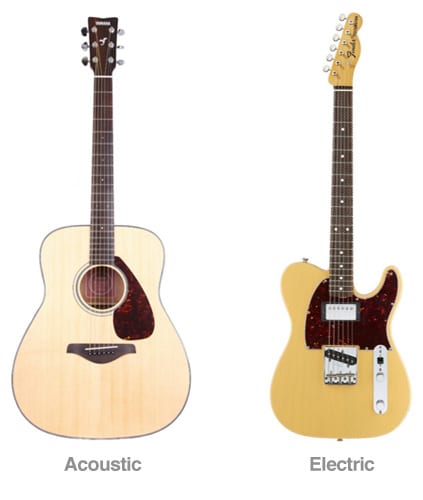
But there are different
types
of acoustic and different
types
of electric.
Let’s look at acoustic guitars first. Broadly, there are two different types of acoustic guitars.
- Classical and flamenco guitars, which use nylon strings. (The guitar on the right, below, is a classical guitar.)
- Steel-stringed guitars are more common and widely-used in rock, blues, pop and country music. (See the guitar on the left, below.)
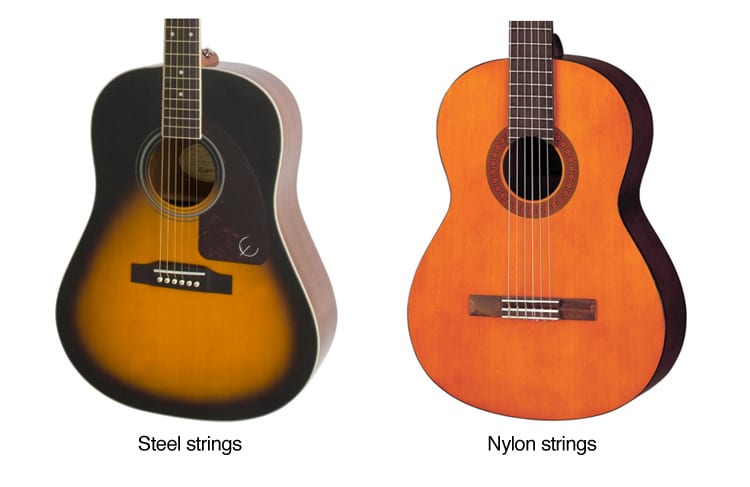
They look similar don’t they? It can be difficult for new guitarists to tell them apart.
How To Quickly Tell If A Guitar Has Nylon Or Steel Strings
- Feel them. Steel strings feel metallic. Nylon strings feel more like plastic and are warmer to the touch.
- Look at the bridge. Steel strings are usually attached with pegs. Nylon strings are tied with a loop.

Steel-strings are under a lot more tension, so they’re pegged in.
Here’s what the nylon strings of a classical guitar look like, with their loops:

What’s the difference between “electro acoustic” & “semi acoustic” guitars?
An electro-acoustic is an acoustic guitar that you can plug into an amplifier if you need more volume or want to use some effects. It looks just like a steel-stringed acoustic guitar, but it has a jack input, like this:
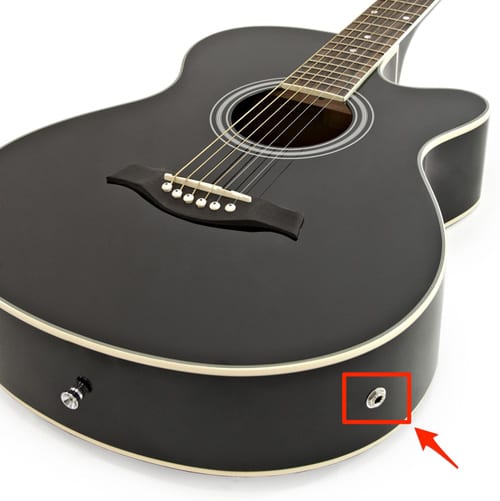
A semi-acoustic guitar (AKA ‘hollow-body’ electric) is a type of electric guitar that has both a sound box and one or more electric pickups. You’ll see an example in the next section.
Electric Guitars
Electric guitar. Even after 25 years of playing, those two words make my heart skip a beat!
If acoustic guitars are ‘standard guitar’ than electric guitars are the “GT Turbo Ultimate Edition”.
Electric guitars have to be connected to a guitar amp. You can certainly play them without being connected to an amp, but they will be very quiet.
(Plus, what’s the point of owning an electric guitar if you don’t play through an amp?)
Broadly, There’s 3 Different Types Of Electric Guitar
1) ‘Standard’ E
lectric Guitars
This is probably the type of electric guitar you have in mind right now. They look like this:
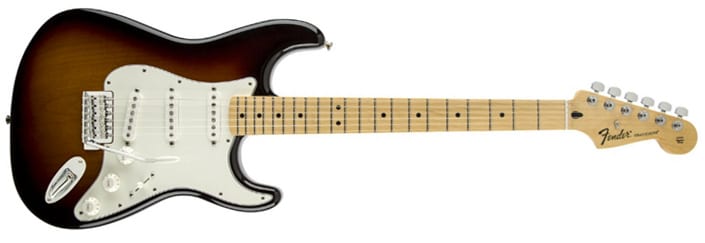
2) Semi-acoustic guitars
(AKA ‘hollow-body’ electric guitars)
This is an electric guitar that has both a sound box and one or more electric pickups. It’s a bit of a hybrid. Here’s an example:

3) Bass Guitars
Guitars normally have 6 strings, but bass guitar is a very different beast. Bass guitars have just 4 strings, they are very thick and play very deep, low tones.
These guitars are heavy and long (they’re built like solid tanks), and they require amplification like every other type of electric guitar. Here’s what a bass guitar looks like:
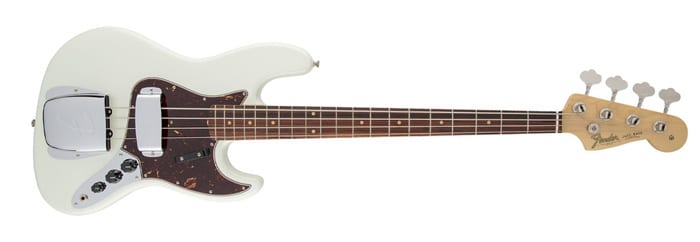
(Don’t be fooled by the scale of this picture – this guitar is about 20% larger than the two above it.)
Bass guitars are mainly used to play single-note melodies to accompany other guitarists.
Every guitarist should play and own a bass at some point because they’re great fun, but they are definitely not the best beginner guitar. (Unless your sole and only aim is to be a bass player!)
To be a well rounded guitarist, you must understand chords and strumming. For this reason, I recommend people learn guitar first and THEN move on to bass if they want to.
There’s no reason you can’t learn both types of guitar, so if bass guitar appeals, give it a shot!
Can you crank the amp where you live?
The best beginner guitar for many people is one that they can play without worrying about volume! This is one of the most practical considerations when buying an electric guitar.
Is it ok for you to have a guitar amp dialled up where you live? Or would your neighbours/parents/spouses not approve!?
Most modern amps have a headphone input which means you can practice in near-silence, but that’s simply not the same as having the amp fill the room.
To buy an electric guitar and not be able to turn the amp up is like having a top of the range sports car in your garage, that you never drive.
Can you crank the amp where you live? If you’re trying to identify the best beginner guitar for you then this is a slightly dull, but very practical consideration. Give it some thought! 🙂

The Secret To Learning Guitar Fast
Do you want to know the secret? A secret I learned over 20 years and through tens of thousands of hours of teaching guitar?
The secret to learning guitar is: <drum roll> Make things easy and fun. Yes, it really is that simple.
My entire teaching philosophy is built around that simple statement: Make Things Easy & Fun.
Why this matters now
You have a choice to make, right now at the beginning of your guitar journey and it’s a crucial choice. What guitar will you choose to learn with?
Will you take the option that will make things easy and fun? Or will you choose the option that makes things frustrating and harder?
Tilt the scales in your favour!

When it’s presented like this, it seems very obvious doesn’t it? It’s much better to have the scales tilted this way. (Why WOULDN’T you take the option that makes things easy and fun, right?)
Well, you would be amazed at how often people choose the more difficult path. Let me explain…
95% of the time, the best guitar for beginners is a steel-stringed acoustic guitar.
Through tens of thousands of hours of teaching people to learn guitar I’ve consistently seen that the best beginner guitar is a steel-stringed acoustic guitar.
People who learn on a steel-stringed acoustic guitar have the best chance of success. (This isn’t necessarily true for kids, but for adults it’s an objective fact.)

Why are steel-stringed acoustics the best beginner guitar? What about classical guitars? And electric guitars?
It’s easier to make an acoustic guitar sound good than an electric guitar. For beginners this is huge.
An acoustic guitar is, essentially, just a lump of wood with a hole in the middle. The tone is very consistent. (There’s only one tone!)
By contrast, the tone of an electric guitar has dozens of variables: amp tones & channels, 3-5 pickup positions, volume and tone controls, on-board effects and a bunch of other stuff.
All these tone-altering elements interact with one another to create endless permutations.
For intermediate and advanced guitarists, this is one of the coolest things about electric guitars! But for beginner guitarists, it’s a recipe for disaster and overwhelm. And that’s why acoustics are the best beginner guitar.
Wanna know something?
Most beginner guitarists who use an electric guitar sound REALLY bad and this is hugely demotivating for a guitar learner in the early stages of their journey.
In time, I hope you progress to electric guitar and you’ll master all the above variables and that will allow you to sound awesome on the electric guitar.
But that will take a little time.
In my experience, beginner guitarists do NOT sound awesome on their electric guitar. The amp and the large number of variables only magnify their shortcomings and create multiple points of failure and complexity.
I like to keep things simple.
Remember my philosophy: Make Things Easy & Fun! 🙂
You can definitely learn on an electric guitar, but overall, acoustic guitar wins out every time. It’s easier to sound good, easier to play and it’s easier to learn. Overall, it’s a simpler experience.
The best beginner guitar is a steel-stringed acoustic guitar.

Why Beginners Should Avoid Classical Guitars
Don’t try to learn on a classical/flamenco guitar. These guitars have much thicker necks, which makes it very difficult for beginners to correctly form chord shapes.
The ideal thickness of a steel-stringed guitar neck for most people is around 120mm. The vast majority of steel-stringed acoustic guitars in your local guitar shop will be around this thickness.
Classical guitar necks are thicker and can often be above 210mm. This makes a profound difference to a beginner guitarist.
Let me explain: There is a finite amount of space between your thumb and your fingertips and this is your fretboard reach.
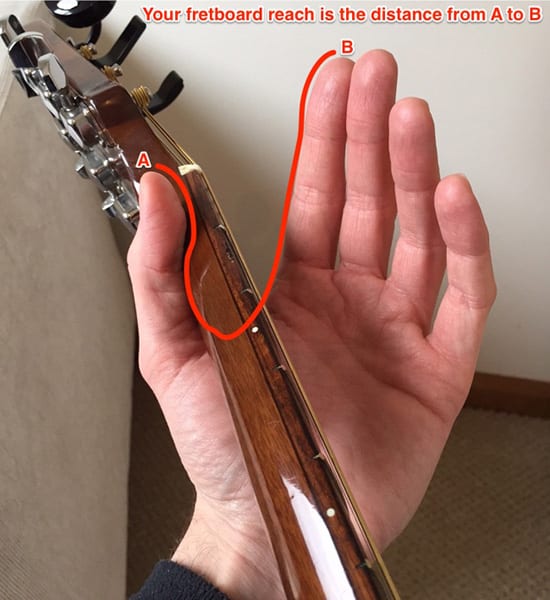
We want this space to be nice and big for guitar beginners.
The thicker neck of the classical/flamenco guitar ‘steals’ a lot of this reach (your hand has to expand and stretch further to accommodate the thicker neck), this makes things harder and more frustrating for guitar beginners.
The best beginner guitar is an instrument that’s easy to play and that’s not the case here.
Now don’t get me wrong, these guitars have a lovely tone (I own 3 of them) and I hope at some point in the future you will own one and play it as much as I play mine.
But please, don’t try and learn on one of these. You will be making everything 30% harder. Remember: “Make Things Easy & Fun!” 🙂
Summary: The best type of guitar to learn with is an acoustic guitar, with steel strings.
So I Shouldn’t Learn Electric Guitar?
Dude, let’s get this clear. Electric guitar is, in my opinion, the pinnacle of guitar playing. You should definitely learn electric guitar, but I don’t recommend you start there. Electric guitar is not the best beginner guitar.
My advice is start with an acoustic, then after 4-8 months you can ‘graduate’ up to electric guitar. By that point you will have a solid foundation. The fundamentals will be in place.
It will be much easier and much more fun for you to approach things in this order.
Then you can bounce back and forth between acoustic and electric for the rest of your days.
Both instruments have their place. I love chilling out with my acoustic. There’s a simplicity and intimate connection between player and instrument that I adore.
As much as I love playing acoustic guitar, the ‘highs’ of electric guitar are even higher. For me, the thrill of a cranked amp has lost none of its appeal over the years.
Even after 25 years, I STILL get goosebumps on the back of my neck and feel like Flea:

(Yes, I know he’s playing a bass in this photo!)
What If I ONLY Want To Learn Electric Guitar?
If you have no desire to learn acoustic guitar, or if you have inherited an electric guitar from somewhere and it’s all you have, then sure thing. Go for it.
In an ideal world, I’d like you to learn acoustic guitar first because I firmly believe it’s the best beginner guitar. But hey, sometimes the planets don’t align and you may only have access to an electric guitar.
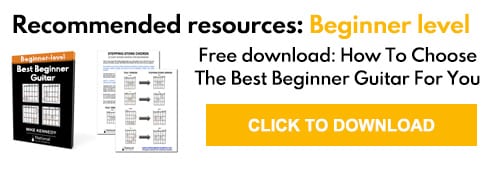
Best Beginner Guitar For Electric Players
The best beginner guitar for electric guitarists is the Fender Telecaster. It’s a timeless classic. A miracle of playability. And it sounds amazing.

It’s better than other electric guitars for beginners because it only has 3 pickup positions, it’s not too heavy, it only has tone and volume controls, but best of all it has a slim neck and the strings are nicely spaced apart which makes chords easier to fret and see.
This guitar sounds incredible and is much more approachable for a beginner than say, a Stratocaster or a Les Paul.
That’s why this is the best beginner guitar for electric players.
Let’s Talk About Your Body
Your body size is an important consideration and your comfort and ability to reach around the guitar are obviously vital.
One size does not fit all!
There Are Different Guitar Body
Shapes
Your body size matters. And thankfully, there is a guitar body shape to match every human body shape!
Let’s run through them, from biggest to smallest.
Jumbo
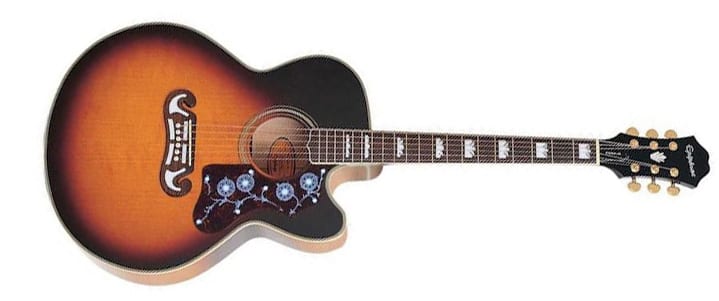
The biggest acoustic body type. Big tone, big volume. Large guitars that are not recommended for small people! (This isn’t the best guitar for beginners.)
Dreadnought

The classic acoustic shape. Absolutely fine for most men and taller women. (This shape will be the best beginner guitar for many.)
Auditorium
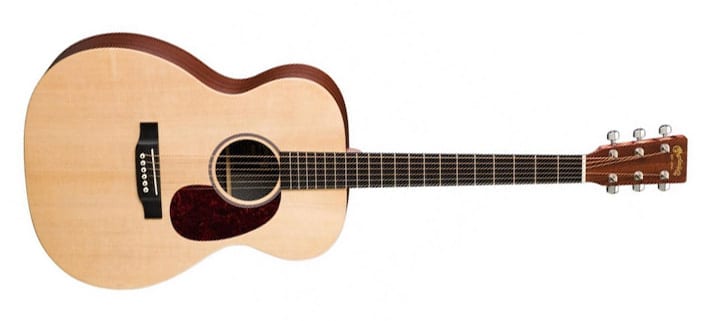
Notice the ‘hourglass’ shape here? This may look like a small change, but it makes the guitar sit a lot lower on the leg and this means it’s much easier for the player to reach over and play.
Parlour

This is a nice, compact size of guitar and, in my personal experience, women much prefer this guitar type to the jumbo or dreadnought style.
Small body
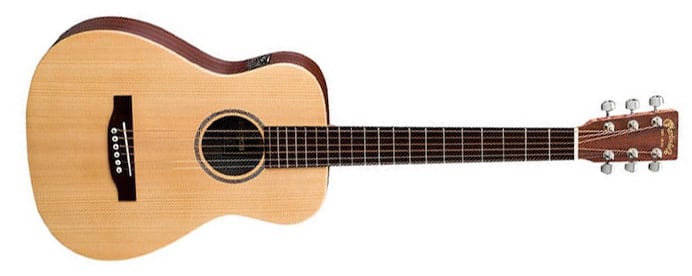
These smaller guitars are very popular at the moment due to artists like Ed Sheeran. They are like shrunken dreadnoughts. Very portable and fun.
What’s the best beginner guitar for petite adults & children?
The best beginner guitar for children is never a full-size guitar.
It doesn’t have to be for an adult either. If you’re a short or petite adult, you may feel more comfortable with a 3/4 size guitar.
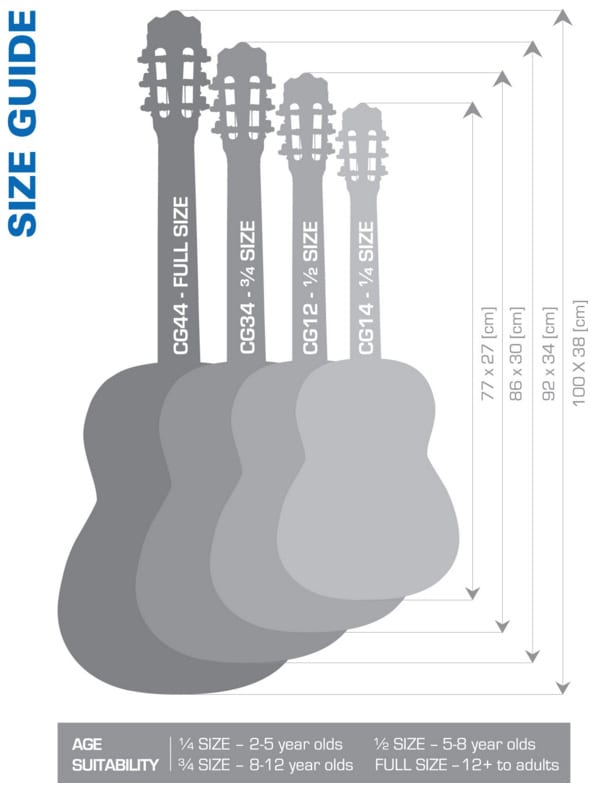
“This is so complicated Mike, which one should I pick?”
The only way to identify the best beginner guitar for YOU is to go and try these different shapes. You don’t need to be able to play the guitar to get a feel for how comfortable this piece of wood is when it sits on your thigh. Go to your local guitar shop and give it a try!
The main things you should consider are:
- How easy is it to get your arm around and over the instrument?
- Do you feel that the guitar is ‘obstructing’ you from playing it? Or is it ‘welcoming’ you?
Go to your local guitar shop and I guarantee that you will find a style that you much prefer to the others. You’ll decide quickly.
So To Summarise What We’ve Learnt So Far…
The best beginner guitar is a steel-stringed acoustic guitar (because it’s the easiest guitar to learn with). The body shape of your ideal guitar is due to your personal preference.
Ok cool! But what if your local guitar shop has 30 guitars that fit your criteria? How do we filter through them and find the best beginner guitar for you?
How To Find The Best Beginner Guitar For You
There are 3 criteria that you need to use. Only 3. They run in this order of priority.
- Budget
- Feel
- Sound
How To Find The Best Beginner Guitar For You – Step 1: Budget
Begin with your budget and stick to it. This will allow you to rule lots of guitars out straight away.
(As a guide, I tell all my students that they should never spend more than $250 on a beginner guitar. There’s simply no need.)
Only consider guitars in your previously-decided-upon price range. (Don’t be seduced by the pricier options the guitar salesman seems intent on showing you!)
Now you should have the list of candidates down to around 5 guitars. It’s time to try each one.
How To Find The Best Beginner Guitar For You – Step 2: Feel
Put each one on your thigh and play a simple Em chord, like this.

(If you don’t know how to read chordboxes yet, read our guide: How To Read Guitar Chordboxes In 60 Seconds.)
Strum the chord and feel how the guitar sits in your palm and on your thigh. I guarantee that 1-2 of the 5-6 guitars you try will feel better to you.
How To Find The Best Beginner Guitar For You – Step 3: Sound
Try not to agonise over this because sound is not as important as feel. You are not a guitar connoisseur (not yet!), you are a guitar learner.
The most important thing of all is that you pick an instrument that has welcoming playability in your hands.
Remember that a guitar’s sound is profoundly affected by how long the guitar’s strings have been on there.
You might be comparing Guitar A (with 4 month-old strings) to Guitar B that had new strings put on that day.
In this scenario, Guitar B will sound much better, but does that mean it’s the better-sounding guitar? Absolutely not. It simply means it has newer strings.
Finding The Best Beginner Guitar: Feel vs Sound
For a beginner guitarist, Feel beats Sound EVERY time. Pick a guitar that’s in your price range and feels great in your hands (and hopefully that guitar sounds ok too)!
Remember that if you are successful in learning guitar you will definitely buy more guitars in future. So think of this, your first guitar, as your ‘trial model’.
That will take pressure off you and you’ll realise that you don’t have to make ‘the perfect purchase’ now.
This will allow you to simply follow your instincts and pick the guitar that sits well on your thigh and feels comfortable in your hands.
“I Already Have A Guitar & It’s Not Ideal”
In my experience, around half of all guitar learners don’t actively choose their first guitar.
They don’t get the opportunity to pick it as they either find it in a dusty basement, or inherit it from a friend, or borrow it from a family member, or it falls to earth from a passing UFO.
They just get it from somewhere.
I called these ‘Found Guitars’.
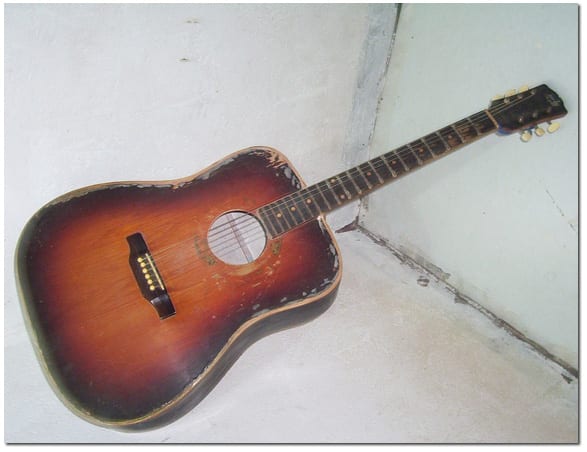
However you acquired your ‘Found Guitar’, I hope you now understand that it’s probably not the best beginner guitar for you.
More often that not, these instruments get passed around because someone else failed to learn with it! (Maybe that’s because the guitar itself isn’t an ideal guitar-learning guitar…)
So if after reading this you think your Found Guitar isn’t ideal then please consider spending a little money to pick up your own steel-stringed acoustic.
Remember This: The Best Beginner Guitar Of All…
Throughout this article I’ve tried to give you some clear direction and ideas that will help you find the best beginner for you. learn guitar (and progress fast).
Some guitars are definitely “better” for beginners than others.
But please don’t lose sight of the fact that the best guitar is simply the one that you have to hand.
I’ve advised you to learn on a steel-stringed acoustic because I think that’s the best beginner guitar overall. I’ve given you other great options for electric and classical and also different body shapes.
Beg or borrow to get a guitar that I’ve recommended because that will stack the odds in your favour and allow yourself to learn in an easier way and a way that’s more fun. (You will learn quicker.)
But if that’s simply not possible in your situation, and you only have access to one guitar, make it work.
There is no guitar that is unlearnable.
Best Beginner Guitar For Acoustic Players
Before we finish, I wanted to offer a few specific recommendations so you have something solid to act on.
Something like the Yamaha FG700S would be a good candidate for “best beginner guitar” for most adults.
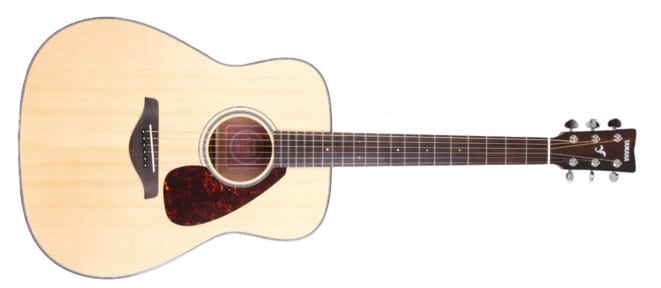
But if you try this guitar and don’t like how it feels, reject it immediately. I only include it here so you have something tangible you can try out.
Never forget the golden rule of guitar buying:
The Golden Rule Of Guitar Buying: “Never buy a guitar without trying it first.”
What If I Don’t Want A Steel-Stringed Acoustic Guitar?
That’s fine, it’s absolutely your choice. Things will be a little harder for you if you want to go electric or classical, but you may enjoy it more, so go for it. It’s your choice dude, my advice is just a guide, after all!
With that in mind, let’s look at some classical/flamenco best beginner guitars.
Best Beginner Guitar For Classical/Flamenco Players

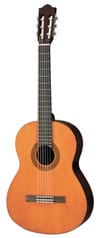 A good beginner guitar for classical players is the Yamaha C40. It’s a well balanced instrument, sounds decent and is great value.
A good beginner guitar for classical players is the Yamaha C40. It’s a well balanced instrument, sounds decent and is great value.
If you are determined to learn classical/flamenco then this is a solid starting point and you can pick this up for a great price.
This guitar delivers a sweet and classic Spanish style.
A Final Ninja Tip!
This is one of my best tips for beginners and it will make an instant impact:
You must put new strings on your guitar and they should be “extra light gauge” strings.
These strings are thinner than normal strings, which means they are gentler on your fingers and it’s easier to make chords and to press down on the strings.

 Putting these strings on your guitar makes things EASIER and makes you SOUND BETTER. It’s an absolute no-brainer.
Putting these strings on your guitar makes things EASIER and makes you SOUND BETTER. It’s an absolute no-brainer.
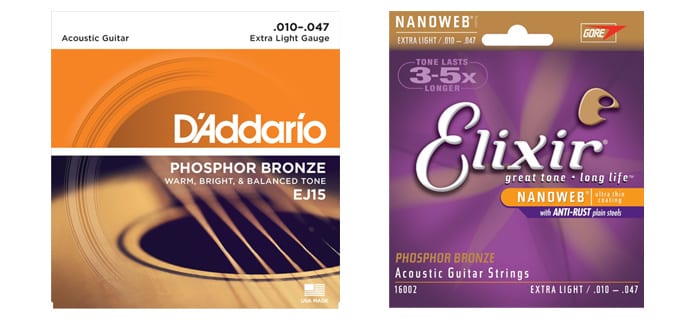
How do I re-string the guitar?
Your local guitar shop with re-string the guitar for you. It will cost around $15 / £10.
If you buy your guitar from a guitar shop they will usually restring it for you for free.
As a general rule, the strings that music shops put on their guitars tend to be thicker as this makes the instrument’s volume louder and more full-bodied which makes it sound better in a busy shop environment.
That’s great for them to sell more guitars, but not ideal for your soft beginner fingertips trying to learn to play on thick and unyielding strings!
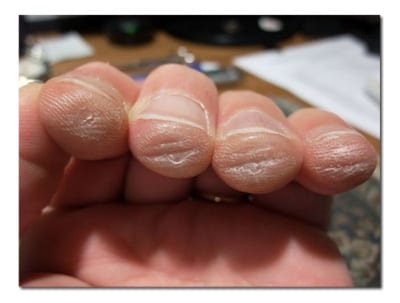
How Do I Know If I Need To Change My Strings
Guitar strings should be bright and shiny. If you inherited the guitar from somewhere, the strings will almost definitely be dull and old. They may have turned a browny/orange colour and they’ll sound terrible.
Change your strings and you’ll sound better and make life easier. Win win.
You will be amazed at the difference new strings make to the sound of your guitar. You will instantly sound 10% better and that will make you want to play more.
Do it! 🙂
How Often Should I Change My Guitar Strings?
As a beginner, you should change your strings every 2-3 months.
It’s not a major procedure, it’s a quick and simple piece of essential maintenance that needs to happen on an ongoing basis.
It’s like taking out the trash, putting fuel in your car or going to the supermarket. It’s just one of those things that has to be done regularly.
(I change my strings every week. As a touring musician I used to change them every day.)
I’m telling you this because most beginner guitarists play on nasty dull strings and then wonder why they sound bad.
Change your strings dude! 🙂
Need more help?
I want you to be successful in your goal of learning to play the guitar. Your success matters to me.
My mission is to spread the gift of music far and wide. So if you have any questions or need any buying advice, email me and I’ll do my best to help you.
Sign up for my beginner guitar lesson series (it’s free) and I’ll send my best guitar tutorials straight to your inbox.
What Type of Guitarist Are You?
Take our 60-second quiz & get your results: Take The Quiz
Our guitar courses
How do you want to improve as a guitarist? Click here to check out our guitar courses
Cool Guitar T-shirts
Look cooler! Check out our merch: Click here to see our merch store
Want free guitar tips and video lessons delivered to your inbox?
Join over 250,000 other guitar learners and subscribe to our guitar-tips-by-email service. (It’s free.)
We’ll send you a series of lessons that will move you to the next level of your guitar journey.
Learn how everything fits together quickly, easily and effectively. We share ninja tips (for instant fun!) but also timeless fundamentals that will deepen your understanding.


Popular Lessons
How To Learn Guitar: An 11-Step Programme For Beginners
10 Easy Songs For Beginners
How To Strum A Guitar
How To Choose The Perfect Beginner Guitar
Guitar Notes Explained: A Guide For Beginners
How To Play Lead Guitar
3 Easy Ways To Play Bm
Our guitar courses
Become a better guitarist: Click here to check out our guitar courses
More Cool Guitar Stuff
Learn about the National Guitar Academy: About Us
Visit our YouTube channel for fun guitar videos.
Join us on Facebook for daily guitar tips.
Listen to our Learn Guitar Podcast for rapid guitar progress.
Check out our free chord lessons.















![Toni Kroos là ai? [ sự thật về tiểu sử đầy đủ Toni Kroos ]](https://evbn.org/wp-content/uploads/New-Project-6635-1671934592.jpg)


